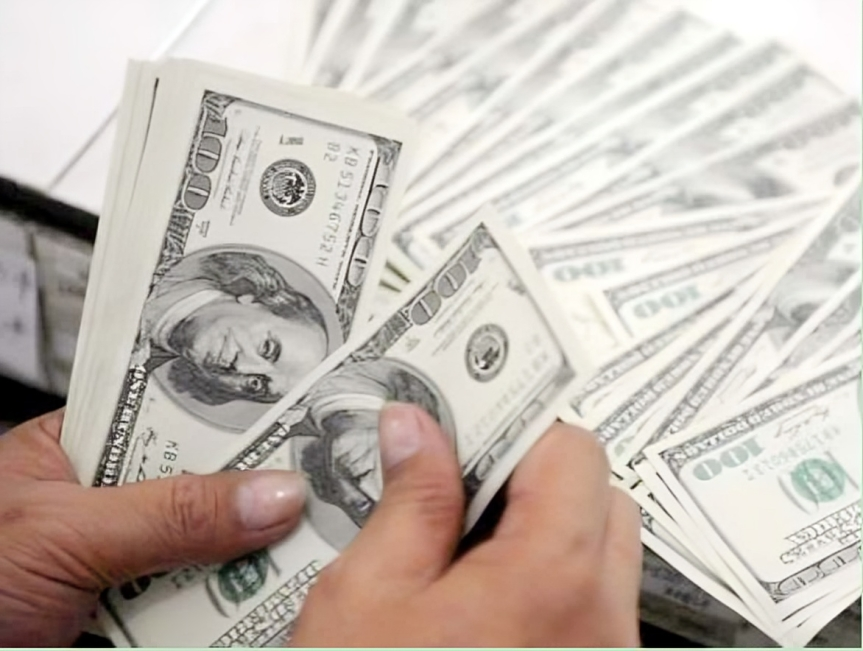ISLAMABAD: As Pakistan looks to bridge a $2 billion external financing gap, Finance Minister Muhammad Aurangzeb has initiated talks with Middle Eastern banks to secure commercial loans, as the cost of borrowing from the International Monetary Fund (IMF) now exceeds 5%, making it an increasingly expensive option.
On Thursday, Aurangzeb reached out to Dubai Islamic Bank, marking his second meeting with a Gulf bank in a week after earlier discussions with Mashreq Bank. During a virtual meeting with Dubai Islamic Bank’s Group CEO, Dr. Adnan Chilwan, the finance minister explored potential avenues for increased investment in Pakistan, particularly in sectors like Islamic banking, infrastructure, and SMEs development. Dr. Chilwan expressed the bank’s interest in playing larger role in Pakistan’s financial growth.
Aurangzeb invited Dubai Islamic Bank to expand its investments in Pakistan and reiterated the government’s commitment to maintaining a stable macroeconomic environment to facilitate foreign investment. Following these initial meetings, finance ministry officials scheduled to meet with foreign bank staff next week to discuss loan amount and low interest rates.
Earlier this month, Aurangzeb revealed that Pakistan received a commercial loan offer from a European bank but waiting for IMF board approval to secure lower interest rates. The European bank had offered double-digit interest rates, which considered politically and economically unfeasible. However, the IMF has indefinitely postponed the approval of a $7 billion Extended Fund Facility (EFF) after Pakistan failed to secure an additional $2 billion in financing and rollover of $12 billion in cash deposits from Saudi Arabia, China, and the UAE.
The finance minister now hopes for IMF approval of the new EFF in September. Despite these delays, Pakistan’s foreign exchange reserves have risen to $9.3 billion, bolstered by significant central bank purchases from the domestic market.
Pakistan’s engagement with foreign commercial banks has intensified, although high financing costs and a low credit rating from international agencies remain significant challenges. Dubai Islamic Bank has expressed interest in providing syndicated financing facilities to Pakistan, closely monitoring the IMF’s stance on extending support to the country. Pakistan’s current credit rating of CCC+—below investment grade—leads to higher interest rate demands from commercial banks. However, Aurangzeb remains optimistic that international credit rating agencies may upgrade Pakistan to investment grade by the next fiscal year.
Meanwhile, the Ministry of Finance and the State Bank of Pakistan (SBP) briefed the Senate Standing Committee on Economic Affairs about Pakistan’s long-standing engagements with the IMF since 1958. Qader Bakhsh, an SBP executive, informed the committee that Pakistan’s last Stand-By Arrangement with the IMF had an average interest rate of 5.1%, making it a costly deal. The new IMF loan programme is expected to carry similar interest rates unless global rates decline. The IMF interest rate is determined by the Special Drawing Rights (SDR) basket price, plus a 1% base rate and additional surcharges tied to loan volume and duration.
Traditionally, loans from the World Bank, the Asian Development Bank, and the IMF were considered affordable. However, due to Pakistan’s growing borrowing needs and limited capacity to sustain such debt, interest rates from the WB and ADB have also increased.
Data from the finance ministry shows that Pakistan’s interest costs on IMF loans have steadily risen since 2008. In that year, Pakistan borrowed at an interest rate of 1.6%, which increased to 2.4% in 2013. The 2019 IMF programme was secured at an average interest rate of 3.41%.
Maryum Kayani, Joint Secretary at the Ministry of Finance responsible for IMF affairs, stated that since 1958, Pakistan has entered into 24 IMF programmes and four special one-time facilities, signing loans worth 28.3 billion SDRs (approximately $40.5 billion). Of this amount, Pakistan received 21.3 billion SDRs (about $28.6 billion), with the remaining undisbursed.
Contrary to the common belief that Pakistan has only completed two of its 24 IMF programmes, the finance ministry informed the standing committee that the country has actually completed nine programmes, including those from 1965-1966, 1968-1969, 1973-1974, 1974-1975, 1977-1978, 1988-1990, 2000-2001, 2013-2016, and 2023-2024.


Comments are closed, but trackbacks and pingbacks are open.